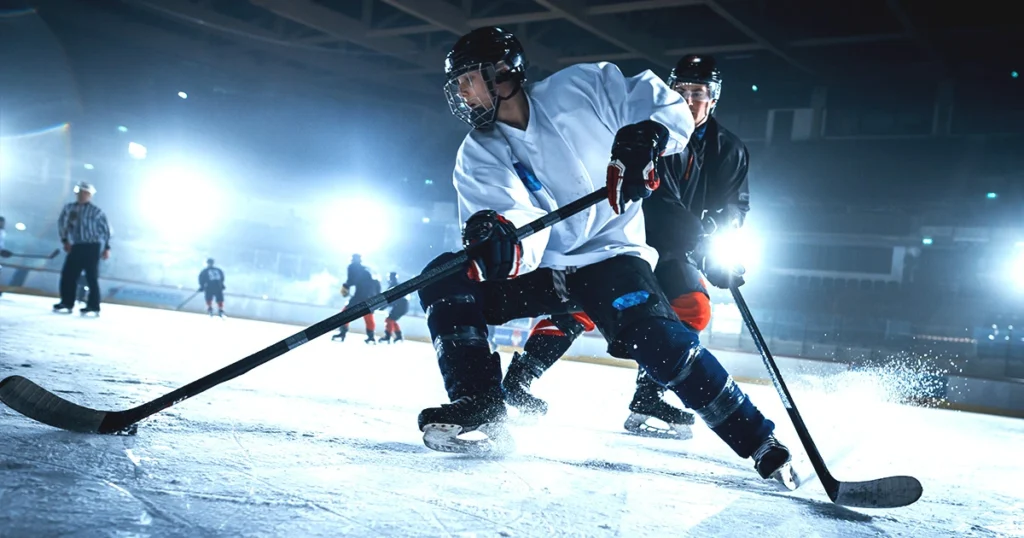
Introduction to Ice Hockey Systems
Ice hockey systems are the strategic blueprints that teams use to navigate the fast-paced and dynamic nature of the game. From offensive formations to defensive strategies, understanding and implementing effective systems can significantly impact a team’s success on the ice. In this comprehensive guide, we’ll explore the fundamental principles, various types, and advanced tactics of ice hockey systems, providing coaches, players, and enthusiasts with valuable insights to elevate their understanding of the game.
Basic Principles of Ice Hockey Systems
Ice hockey systems are built on a foundation of key principles that guide player positioning, puck movement, and overall team strategy. At the core of these principles are teamwork, communication, and adaptability. Each player within a system has specific roles and responsibilities, whether it’s forechecking aggressively in the offensive zone or maintaining defensive structure in the neutral zone.
One fundamental principle of ice hockey systems is the concept of forecheck and backcheck. Forechecking refers to the aggressive pursuit of the puck in the offensive zone, putting pressure on the opposing team and creating scoring opportunities. Conversely, backchecking involves defensive players quickly transitioning to defense to prevent opponents from scoring on the counterattack.
Types of Ice Hockey Systems
There are several types of ice hockey systems, each with its own unique characteristics and strategic objectives. Some of the most common systems include:
- The 2-1-2 System: This classic forechecking system involves two forwards pressuring the puck carrier, one forward supporting in the middle, and two defensemen covering the defensive zone.
- The Neutral Zone Trap: A defensive system designed to slow down opponents’ attacks by clogging the neutral zone and forcing turnovers.
- The Overload System: An offensive strategy that creates numerical advantages in specific areas of the ice to generate scoring opportunities.
- The Umbrella Power Play: A power play formation that positions players in a triangle or umbrella shape to maintain puck possession and create shooting lanes.
Each system has its strengths and weaknesses, and coaches may choose to implement different systems based on factors such as opponent strengths, game situations, and player personnel.
Implementing Ice Hockey Systems
Implementing ice hockey systems requires teamwork, practice, and effective communication among players and coaches. Coaches often use practice drills to reinforce system-specific skills and strategies, focusing on concepts such as positioning, puck support, and defensive coverage. Clear communication is essential for players to understand their roles within the system and make quick decisions on the ice.
Adaptability is another crucial aspect of implementing ice hockey systems. Teams must be prepared to adjust their systems based on opponent tactics, game flow, and score situations. In-game adjustments can make the difference between victory and defeat, as teams seek to exploit weaknesses and capitalize on opportunities.
Advanced Tactics and Adjustments
In addition to basic principles and system implementation, coaches and players can employ advanced tactics and adjustments to enhance their performance on the ice. Line matching, for example, involves strategically matching lines to counter opponents’ strengths and exploit weaknesses. In-game adjustments may include shifting defensive formations, changing forechecking strategies, or altering power play tactics to gain a competitive edge.
Case Studies and Examples
Examining real-life examples and case studies can provide valuable insights into the effectiveness of ice hockey systems. For instance, analyzing games or teams known for their successful implementation of specific systems can offer lessons on tactics, player positioning, and overall team strategy. By studying these examples, coaches and players can identify key principles and strategies to incorporate into their own gameplay.
Challenges and Limitations of Ice Hockey Systems
While ice hockey systems can be highly effective when executed correctly, they also present challenges and limitations. Teams may struggle to implement systems consistently, especially when facing skilled opponents or adapting to changing game conditions. Additionally, certain systems may be more vulnerable to counterattacks or require precise execution to be successful.
Future Trends and Innovations
Looking ahead, ice hockey systems are likely to evolve with advancements in technology, analytics, and player development. Innovations such as advanced statistical analysis, virtual reality training simulations, and data-driven coaching strategies may shape the future of ice hockey systems. Coaches and players who embrace these trends and innovations will be better equipped to stay ahead of the competition and achieve success on the ice.
Conclusion: Mastering Ice Hockey Systems
In conclusion, mastering ice hockey systems is essential for coaches, players, and enthusiasts seeking to elevate their understanding and performance in the game. By understanding the basic principles, exploring various types of systems, and implementing advanced tactics, teams can maximize their effectiveness on the ice. While challenges and limitations may arise, a commitment to continuous learning and adaptation will position teams for success in the ever-evolving world of ice hockey.